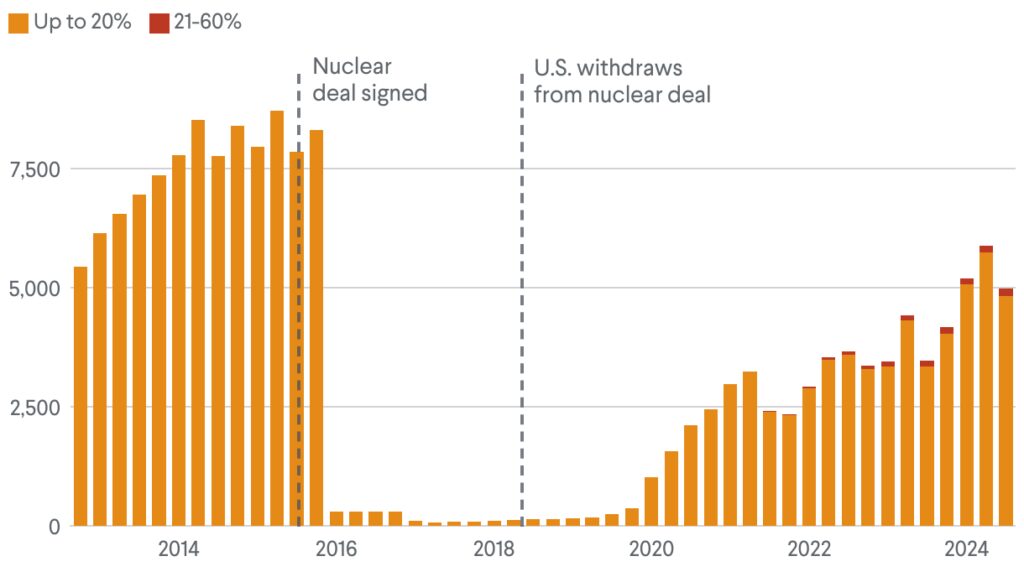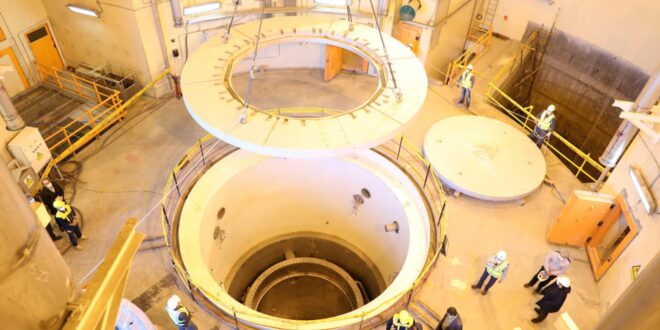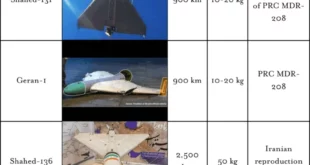Iran’s nuclear program and missile arsenal have garnered increased international scrutiny amid its flaring conflict with Israel.
Introduction
Many foreign policy experts warn that if Iran were to acquire nuclear weapons, it would be broadly destabilizing for the Middle East and nearby regions. A first-order concern is that Iran’s possession of nuclear weapons would pose a major, perhaps existential threat to Israel, its longtime foe. Other foreign policy experts say Iran would be assuring its own demise if it were to launch a nuclear strike on Israel, a close U.S. defense partner and possessor of its own nuclear weapons arsenal, which is undeclared. Either way, there would be a dangerous potential for miscalculation that could result in a nuclear exchange, analysts say.
Does Iran have a nuclear weapon?
Iran does not yet have a nuclear weapon, but it has a long history of engaging in secret nuclear weapons research in violation of its international commitments. Western analysts say the country has the knowledge and infrastructure to produce a nuclear weapon in fairly short order should its leaders decide to do so.
The United States, Israel, and other Middle Eastern partners regard Iran as a primary threat to their interests in the region, and view its potential acquisition of nuclear weapons as a game-changing scenario to be steadfastly prevented—by force if necessary.
Iran has had a civilian nuclear energy program for more than fifty years, long maintaining that it’s strictly for peaceful purposes. But revelations in the early 2000s about the country’s secret nuclear sites and research raised alarms in world capitals about its clandestine pursuit of a nuclear weapon. Iran’s nuclear program has since been the subject of intense international debate and diplomacy, which culminated in a 2015 nuclear agreement.
The United States unilaterally withdrew from that agreement in 2018; since then, international monitors say that Iran has greatly expanded its nuclear activities, again heightening concerns about its “breaking out” to develop a nuclear weapon. In recent weeks, amid Israel’s conflicts against Hamas, Hezbollah, and Iran, many observers have questioned whether it would strike Iran to prevent or delay its acquiring a nuclear weapon. Israel has demonstrated some willingness to do so in the past, striking nuclear reactor sites in both Iraq (1981) and Syria (2007).
In October 2024, U.S. government officials confirmed a prior intelligence community assessment that said Iran does not have nuclear weapons. “Iran is not currently undertaking the key nuclear weapons-development activities necessary to produce a testable nuclear device,” reported U.S. intelligence officials [PDF] in early 2024.
Tehran also said as much earlier this year. “Iran has repeatedly said its nuclear programme only serves peaceful purposes. Nuclear weapons have no place in our nuclear doctrine,” a government spokesman said in April 2024.
How long would it take Iran to develop a nuclear weapon?
Analysts have said that Iran could produce enough fissile material for a weapon in a few months, although many acknowledge that it would likely take longer for it to manufacture a nuclear weapon.
One of the goals of the now-defunct nuclear agreement that world powers, including the United States, struck with Iran in 2015 was to place limits on its nuclear activity so that it would take Iran at least a year to produce a weapon, giving governments a fair amount of warning to respond.
However, following the U.S. withdrawal from the agreement in 2018, Iran has expanded its nuclear enrichment activities and limited international inspections of its nuclear facilities, the last of which occurred in 2021. In June 2024, U.S. Secretary of State Antony Blinken said that Iran could produce the fissile material necessary for a weapon in “one or two weeks.”

But some nuclear technology experts say Iran would have to complete many other challenging and risky steps, including sufficient testing, before they had a viable weapon. Even then, Iran would likely want to build an initial arsenal of several weapons to give it a retaliatory strike capability and establish a baseline level of deterrence.
Where are Iran’s nuclear facilities?
Iran is engaged in nuclear-related activities at more than a dozen locations across the country. Its largest enrichment facility is at Natanz, while its sole nuclear power plant is at Bushehr, on the Persian Gulf coast.
What are Iran’s missile capabilities?
As demonstrated in its air strikes against Israel twice this year, Iran has varied capabilities, including deep and diverse arsenals of cruise and ballistic missiles, as well as drones. U.S. intelligence analysts say that Iran has the largest ballistic missile inventory in the Middle East. (Ballistic missiles take a parabolic path through the atmosphere, traveling much faster than drones and cruise missiles, and are generally harder to intercept.)
Iran’s longest-range missiles are reportedly capable of striking targets of up to 2,000 kilometers (roughly 1,240 miles) away, perhaps further, covering all of the Middle East and parts of Europe. Larger conventional warheads could kill or injure hundreds of people in a dense urban environment, weapons experts say. For instance, Israel and Russia have used bombs with similar payloads in the Gaza Strip and Ukraine, respectively, which have reportedly left craters more than twelve meters (forty feet) in diameter.
Iran does not currently have an intercontinental ballistic missile (ICBM)—the longest-range strike weapon (more than 5,500 km, or 3,400 miles)—although analysts say its nascent space program could lend itself to a more rapid development of ICBMs.
Iran’s two strikes on Israel in 2024 were its first attempts to hit Israeli targets with weapons fired from Iran. Tehran reportedly telegraphed its intentions days ahead of the first strike, in April, which consisted of drones, cruise missiles, and ballistic missiles. Israel and its partners also had hours to track and respond to the slower-moving attack drones and missiles. However, the second strike, in October, was launched without warning and consisted of mostly ballistic missiles, which can reach their intended targets in minutes.
U.S. and Israeli officials have said that both of Iran’s air strikes were largely neutralized by defensive systems or otherwise failed to do much damage, but some projectiles did get through. One satellite imagery analysis of the October strike indicated that more than thirty Iranian missiles hit an air base in southern Israel, suggesting that Israel either decided not to defend these particular strikes, or that the defenses failed. Analysts warn that future strikes could be larger and more difficult to intercept, particularly if Iran uses more of its most advanced weapons, such as the Fattah-1 and Kheybar Shekan missiles.
What if Iran acquires a nuclear weapon?
Many foreign policy experts warn that a nuclear-armed Iran would be an acute threat to Israel, and pose a major challenge to the interests of the United States and its various partners in the Middle East. Some regional analysts fear that a nuclear-armed Iran would likely be emboldened to pursue a more aggressive foreign policy, not only in the region but via its growing military and economic partnerships with U.S. rivals Russia and China. Iran has recently provided Russia with various weapon systems, including drones and shorter-range ballistic missiles, to help supplement its forces battling against Ukraine.
There is also concern that Iran’s acquisition of these weapons will incentivize other countries in the region, particularly Saudi Arabia, to pursue them as well, which could catalyze a dangerous nuclear arms race. “If they get one, we have to get one, for security reasons and for balancing power in the Middle East. But we don’t want to see that,” said Saudi Crown Prince Mohammed bin Salman in a 2023 Fox News interview.
“If in the not-too-distant future the clerical regime [in Iran] can test a nuclear weapon, then it will overnight diminish any power that Israel and America have in the region,” wrote Reuel Marc Gerecht and CFR’s Ray Takeyh in October 2024. “The United States has never attacked a nuclear-armed state. It’s a good guess that Israel…will not attack a nuclear-armed state.”
 Eurasia Press & News
Eurasia Press & News



